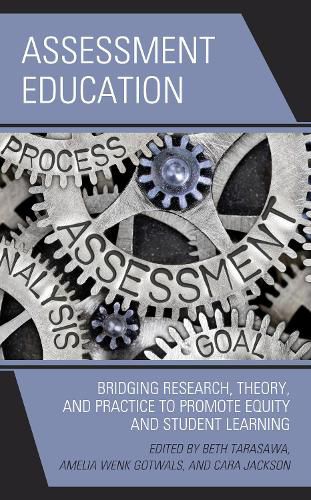Readings Newsletter
Become a Readings Member to make your shopping experience even easier.
Sign in or sign up for free!
You’re not far away from qualifying for FREE standard shipping within Australia
You’ve qualified for FREE standard shipping within Australia
The cart is loading…






Using assessment systems to improve student outcomes requires shared understanding and collaboration among education stakeholders at multiple levels. Assessment Education: Bridging Research, Theory, and Practice to Promote Equity and Student Learning presents a powerful call to action for an assessment system that advances equity and offers educators practical applications that promote sound instructional decision making. Each section outlines a research-based approach that supports classroom teaching and student learning. We then draw on the expertise of various education leaders (most notably members of the National Taskforce on Assessment Education) to provide case studies of on-the-ground examples of what these strategies look like in different settings. Every chapter includes stories from the field from various perspectives-teachers, principals, district administrators, and other educational leaders. We conclude with reflection questions that provide an opportunity for readers to examine how the chapter connects to their own context.
$9.00 standard shipping within Australia
FREE standard shipping within Australia for orders over $100.00
Express & International shipping calculated at checkout
Using assessment systems to improve student outcomes requires shared understanding and collaboration among education stakeholders at multiple levels. Assessment Education: Bridging Research, Theory, and Practice to Promote Equity and Student Learning presents a powerful call to action for an assessment system that advances equity and offers educators practical applications that promote sound instructional decision making. Each section outlines a research-based approach that supports classroom teaching and student learning. We then draw on the expertise of various education leaders (most notably members of the National Taskforce on Assessment Education) to provide case studies of on-the-ground examples of what these strategies look like in different settings. Every chapter includes stories from the field from various perspectives-teachers, principals, district administrators, and other educational leaders. We conclude with reflection questions that provide an opportunity for readers to examine how the chapter connects to their own context.